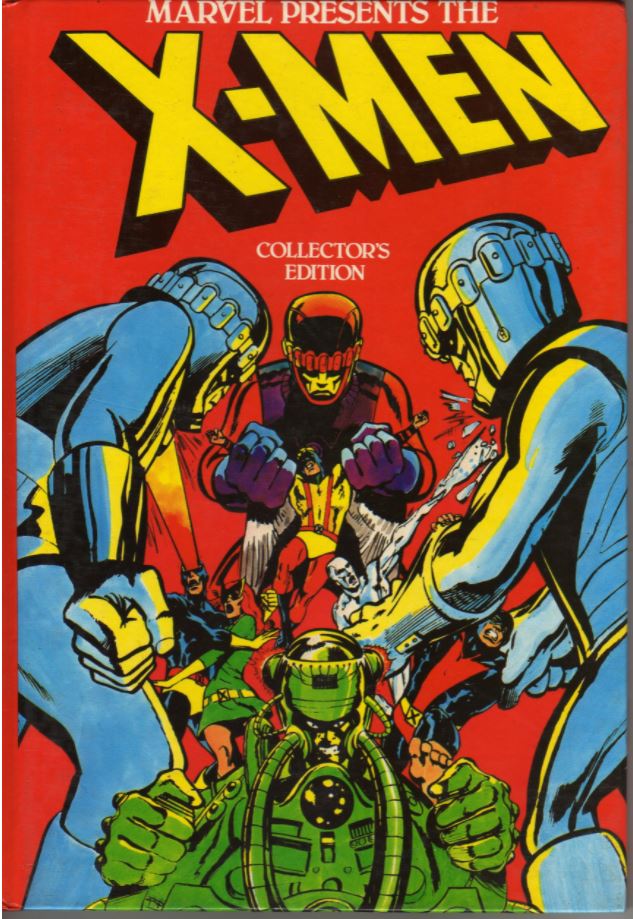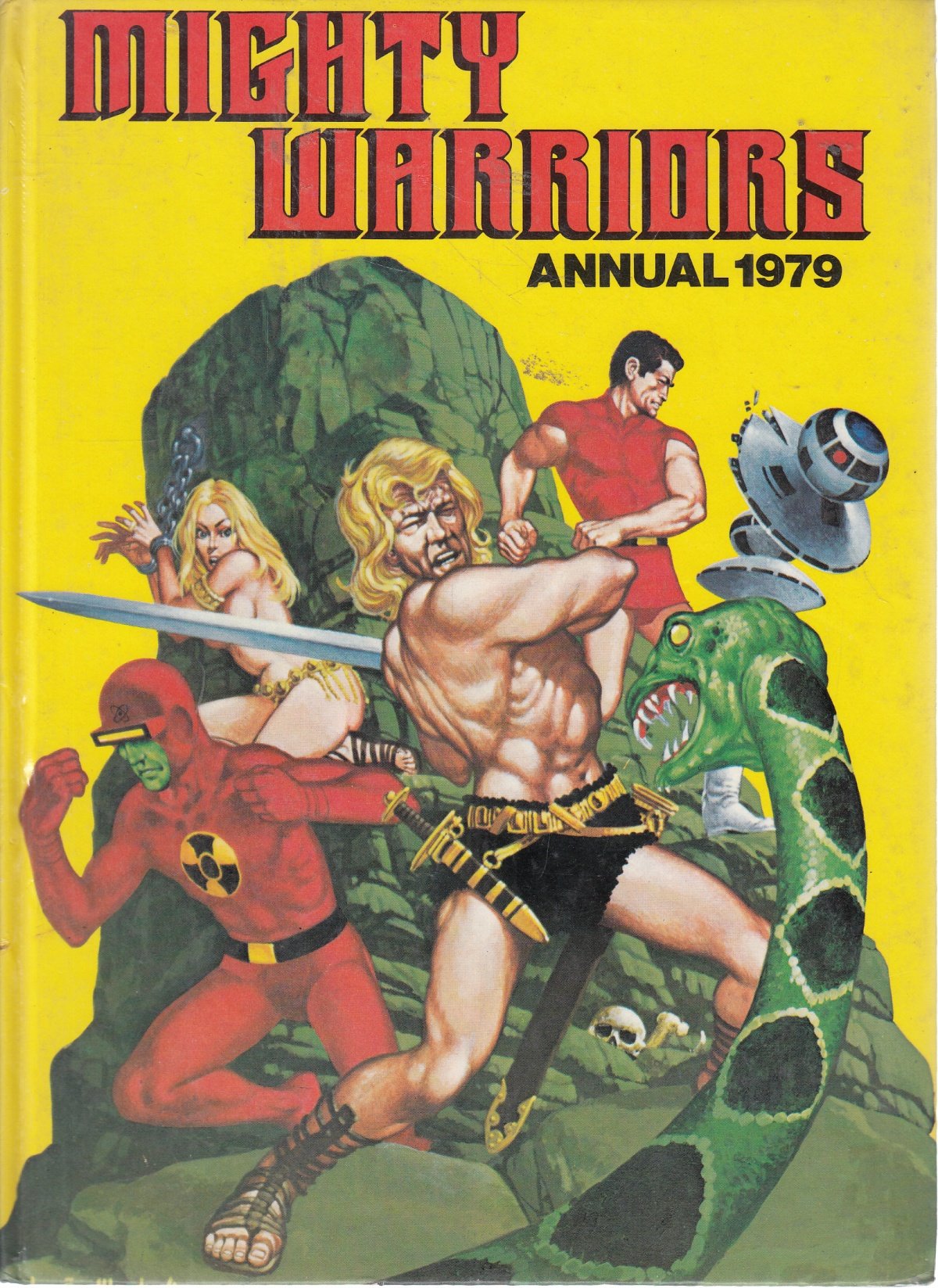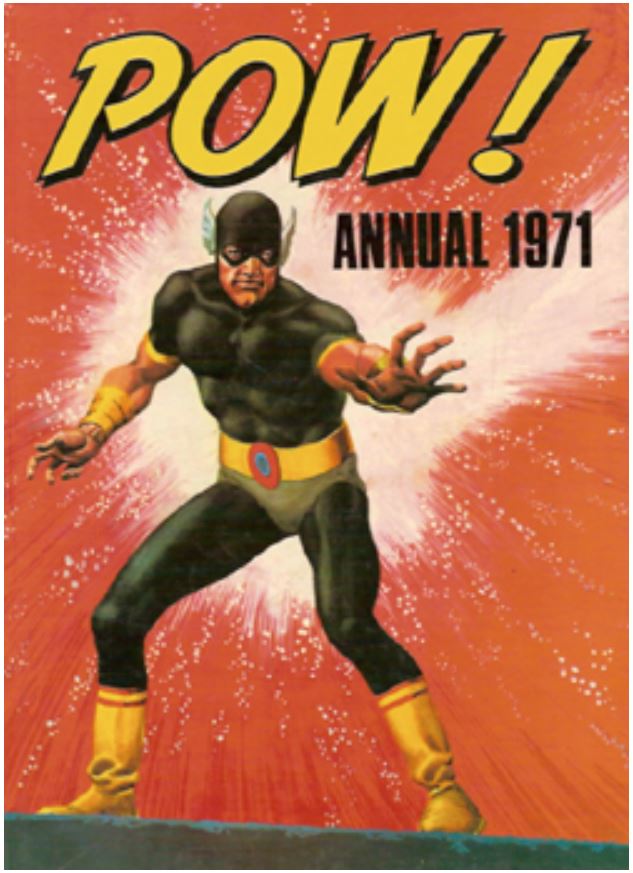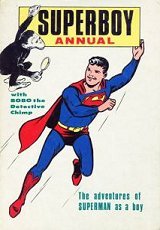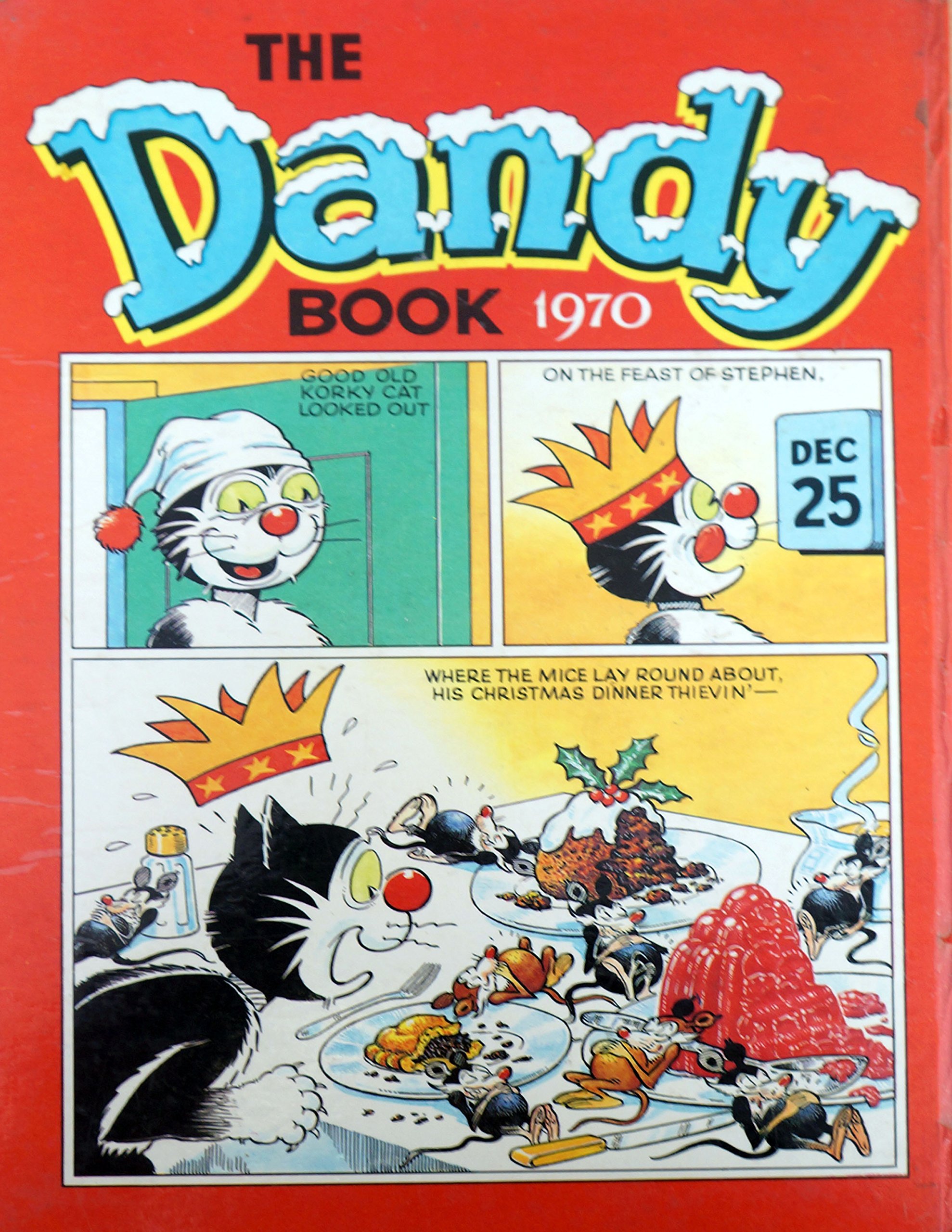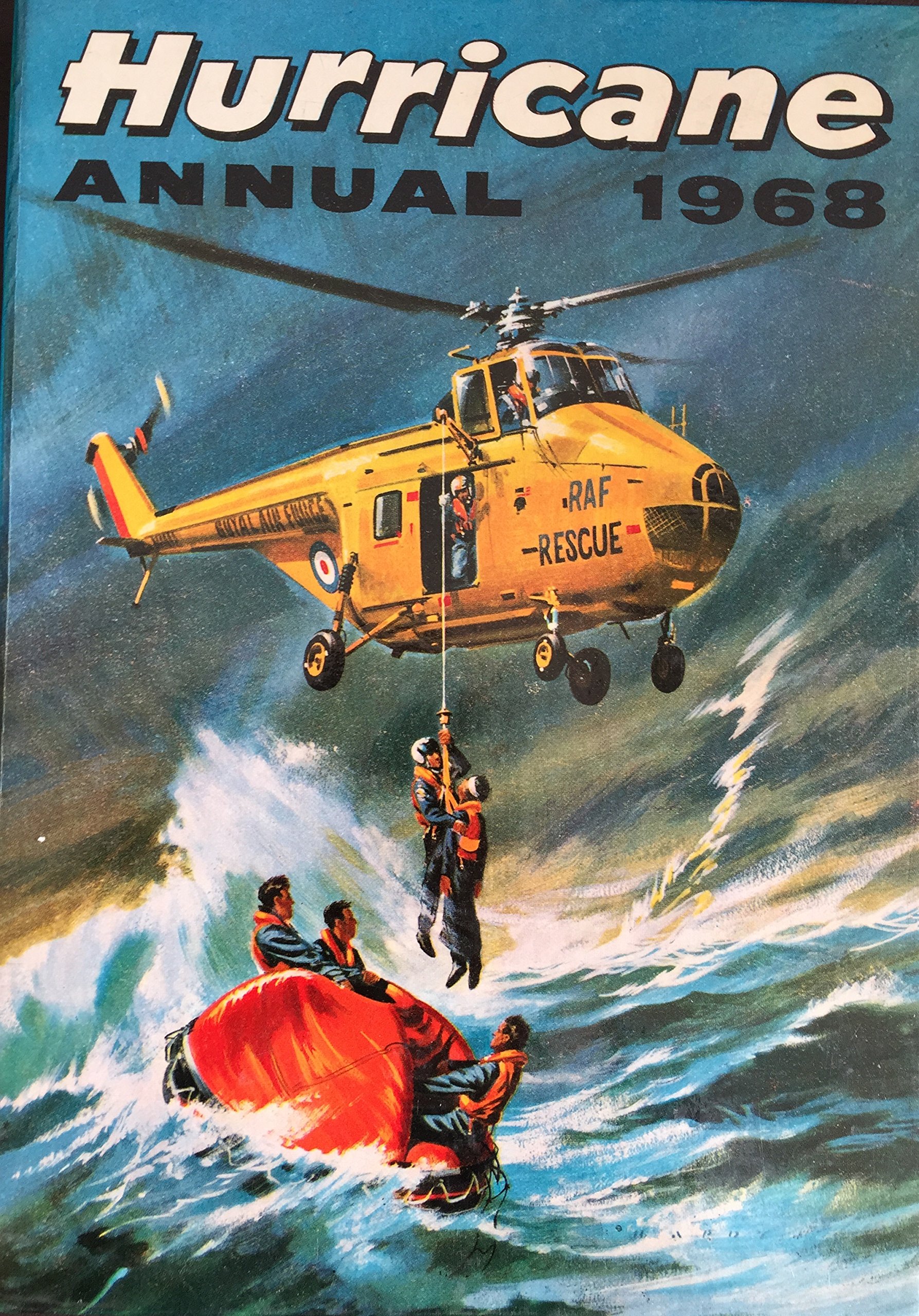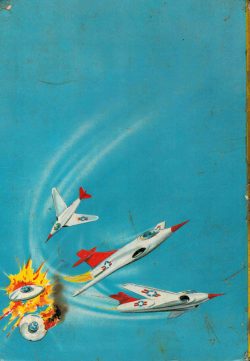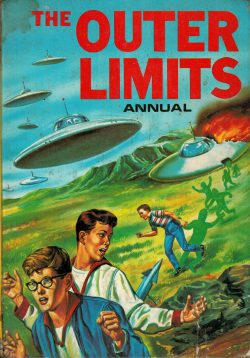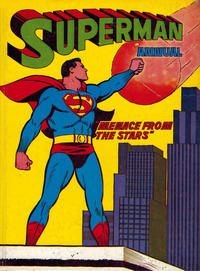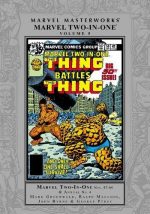
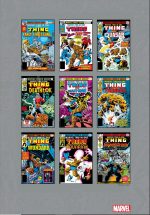
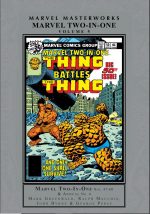
By Mark Gruenwald, Ralph Macchio, Bill Mantlo, Jo Duffy, John Byrne, Peter B. Gillis, Steven Grant, Marv Wolfman, Allyn Brodsky, David Michelinie, George Pérez, Chic Stone, Alan Kupperberg, Frank Miller, Jim Craig& various (Marvel)
ISBN: 978-1-3029-2220-7 (HB)
It’s the anniversary of the Fantastic Four this year and we couldn’t let it go without celebrating the team’s most iconic member…
Above all else, Marvel has always been about team-ups. The concept of team-up books – an established star pairing, or battling (often both) with less well-selling company characters – was not new when Marvel awarded their most popular hero the same deal DC had with Batman in The Brave and the Bold. Although confident in their new title, they wisely left options open by allocating an occasional substitute lead in the Human Torch.
In those long-ago days, editors were acutely conscious of potential over-exposure – and since super-heroes were actually in a decline they may well have been right.
Nevertheless, after the runaway success of Spider-Man‘s guest vehicle Marvel Team-Up, the House of Ideas carried on the trend with a series starring bashful, blue-eyed Ben Grimm – the Fantastic Four‘s most popular star. They began with a brace of test runs in Marvel Feature #11-12 before awarding him his own team-up title, with this fifth classy compendium gathering in hardback or digital editions the contents of Marvel Two-In-One #47-60, MTIO Annuals #2-3 and Avengers Annual #4, covering January 1979-February 1980. Preceded by a comprehensive and informative reminiscence in Ralph Macchio’s Introduction, the action begins a true golden age for the title.
The innate problem with team-up tales was always a lack of continuity – something Marvel always prided itself upon – and which writer/editor Marv Wolfman had sought to address during his tenure through the simple expedient of having stories link-up through evolving, overarching plots which took Ben from place to place and from guest to guest.
Arguably the very best of these closes this volume; the vast-scaled, supremely convoluted saga known as “The Project Pegasus Sagaâ€â€¦
Although the company’s glory-days were undoubtedly the era of Lee, Kirby & Ditko leading through to the Adams, Buscema(s), Englehart, Gerber, Steranko and Windsor-Smith “Second Waveâ€, a lot of superb material came out the middle years when Marvel was transforming from inspirational small business to corporate heavyweight.
This is not said to demean or denigrate the many fine creators who worked on the tide of titles published after that heady opening period, but only to indicate that after that time a certain revolutionary spontaneity was markedly absent from the line.
It should also be remembered that this was not deliberate. Every creator does the best job he/she can: posterity and critical response is the only arbiter of what is classic and what is simply one more comicbook. Certainly high sales don’t necessarily define a masterpiece – unless you’re a publisher…
Nevertheless, every so often everyone involved in a particular tale seems to catch fire at the same time and magic occurred. Before that, though, a gradual increase in overall quality begins after perpetual gadflies The Yancy Street Gangheadlined in MT-I-O #47 as ‘Happy Deathday, Mister Grimm!’ (Bill Mantlo & Chic Stone) saw a cybernetic tyrant take over Ben’s old neighbourhood. The invasion concluded – once awesome alien energy powerhouse Jack of Hearts joined the fight – with ‘My Master, Machinesmith!’ in #48 by Mantlo, Stone & Tex Blaisdell.
Mary Jo Duffy, Alan Kupperberg & Gene Day piled on spooky laughs in #49 as the ‘Curse of Crawl-Inswood’ found Doctor Strange manipulating Ben into helping crush a paranormal incursion in a quaint and quiet seaside resort…
Anniversary issue #50 was everything a special issue should be. ‘Remembrance of Things Past’ by Byrne & Joe Sinnott took a powerful and poignant look at the Thing’s history as a monster outcast and posited a few what-might-have-beens…
Following another failure by Reed Richards to cure Ben’s rocky condition, The Thing steals the chemical and travels into his own past, determined to use the remedy on his younger, less mutated self, but his bitter, brooding, brittle earlier incarnation is hardly prepared to listen to another monster and inevitably, catastrophic combat ensues…
Issue #51 was even better. ‘Full House… Dragons High!’ by Peter Gillis, up-&-coming artist Frank Miller & Bob McLeod, details how a weekly poker session at Avengers Mansion is interrupted by rogue US General Pollock, who again tries to conquer America with stolen technology. Happily, Ben and Nick Fury finds Ms. Marvel (not today’s teenager Kamala Khan but Carol Danvers – the current Captain Marvel), Wonder Man and the Beast better combat comrades than Poker opponents…
A note of sinister paranoia creeps in with Marvel Two-In-One #52 in ‘A Little Knight Music!’ (by Steven Grant, Jim Craig & Marcos), as the mysterious Moon Knight joins the Thing to stop CIA Psy-Ops master Crossfire from brainwashing the city’s superheroes into killing each other…
Marvel Two-In-One Annual #4 then provides an old-fashioned, world-busting blockbuster as ‘A Mission of Gravity!’(plotted by Allyn Brodsky, scripted by David Michelinie and illustrated by Jim Craig, Bob Budiansky & Bruce Patterson) brings the Thing and Inhuman monarch Black Bolt together to stop unstable maniac Graviton turning into a black hole and taking the world with him…
That disaster averted, the Thing hits that aforementioned high note in the self-contained mini-saga which partnered him with a succession of Marvel’s quirkiest B-listers and newcomers…
Project Pegasus had debuted in Marvel T-I-O #42-43: a federal research station tasked with investigating new and alternative energy sources and a sensible place to dump super-powered baddies when they’ve been trounced. Ten issues later writers Mark Gruenwald & Ralph Macchio flexed their creative muscles with a 6-issue epic seeing Ben return to Pegasus just as a sinister scheme by a mysterious mastermind to eradicate the facility goes into full effect.
Scripted by Mark Gruenwald & Macchio, it begins as ‘The Inner War!’ (illustrated by Byrne & Joe Sinnott) sees Ben visiting his educationally and emotionally challenged ward Wundarr – who had been left at the secret base after exposure to a reality-warping Cosmic Cube.
Ben meets light-powered security chief Quasar – who technically debuts here, although he was first seen as Marvel Boy in Captain America – only to stumble into a treacherous plot to sabotage the facility…
The consequent clash is augmented by a handy schematic of The Federal research station designated the Potential EnergyGroup/Alternate Sources/United States that will prove invaluable as the saga unfolds.
The tension mounts in ‘Blood and Bionics’ as a reprogrammed Deathlok cyborg stalks the base until the Thing and Quasar crush it. Elsewhere, Ben’s old sparring partner Thundra is recruited by a team of super-powered women wrestlers (I know what you’re thinking, but trust me, it works) with a secret and nefarious sideline…
One of the resident scientists at Pegasus is Bill Foster – who had a brief costumed career as Black Goliath – and he resumes adventuring with a new/old name just in time to help tackle freshly-liberated atomic monster Nuklo in ‘Giants in the Earth’. Sadly, the traitor who let the infantile walking atomic inferno out is still undiscovered and, in the darkest part of the Project, something strange is whispering to the comatose Wundarr…
George Pérez & Gene Day took over as illustrators from #56 as Thundra and her new friends invade in ‘The Deadlier of the Species!’ but even their blistering assault is merely a feint for the real threat and soon a final countdown to disaster is in effect. Doomsday begins ‘When Walks Wundarr!’ and, in his mesmerised wake, a horde of energy-projecting villains incarcerated in the research facility break free…
With chaos everywhere the traitor triggers an extra-dimensional catastrophe, intent on destroying Pegasus ‘To the Nth Power!’, but as a living singularity tries to suck the entire institution into infinity, the end of everything is countered by the ascension of a new kind of hero as The Aquarian debuts to save the day…
Released as one of Marvel’s earliest trade paperback collections, the high-tension bombastic action of The Project Pegasus Saga rattles along without the appearance of any major stars – a daring move for a team-up title but one which greatly enhanced the power and depth of The Thing.
Moreover, by concentrating on rebooting moribund characters such as Deathlok and Giant-Man whilst launching fresh faces Quasar and The Aquarian instead of looking for ill-fitting, big-name sales-boosters, the story truly proves the old adage about there being no bad characters…
Another sound decision was the use of Byrne & Sinnott for the first half and Pérez & the late, great Gene Day to finish off the tale. Both pencillers were in their early ascendancy here and the artistic energy just jumps off the pages.
Publishing schedules wait for no one, however, and the landmark epic is immediately followed by a rather lesser yarn as Marv Wolfman, Macchio, Chic Stone & Al Gordon depict ‘Trial and Error!’ in #59 as Ben and the Human Torch play matchmaker for a dopey dreamer, after which #60 balances the thrills with fun and frolics with Ben and impish ET Impossible Man in hilarious combat with three of Marvel’s earliest bad guys….
Augmented by original art and covers by Pérez; Macchio’s essay ‘Project Prelude’ from that early Marvel collection and its wraparound cover by Ron Frenz; covers from reprint title The Adventures of the Thing (by Sam Keith and Joe Quesada) and biographies for the legion of creators contained herein, this tome of tales from Marvel’s Middle Period are admittedly of variable quality. They are, however, offset by truly timeless classics, still as captivating today as they ever were. Most fans of Costumed Dramas will find little to complain about and there’s lots of fun to be found for young and old readers. So why not lower your critical guard and have an honest blast of pure warts ‘n’ all comics craziness? You’ll almost certainly grow to like it…
© 2020 MARVEL.

